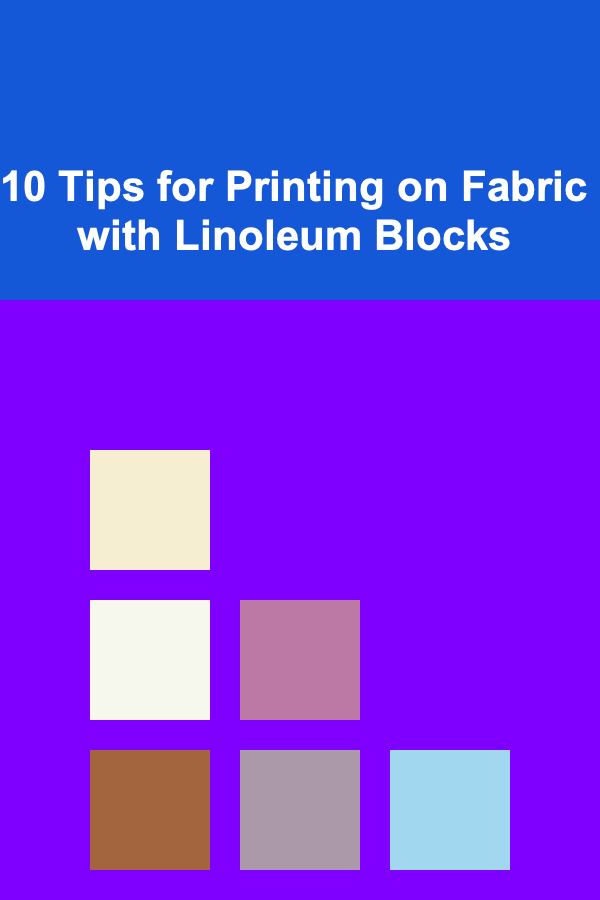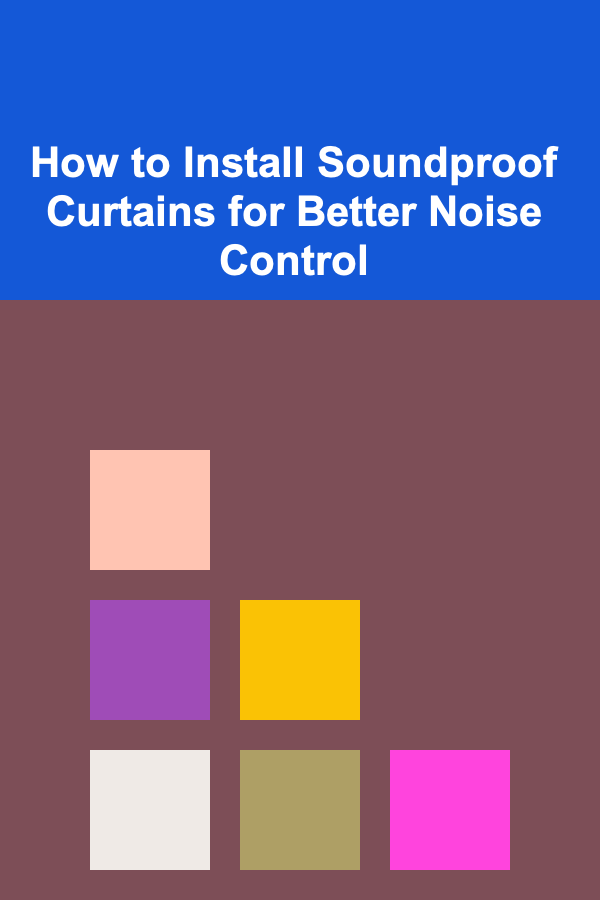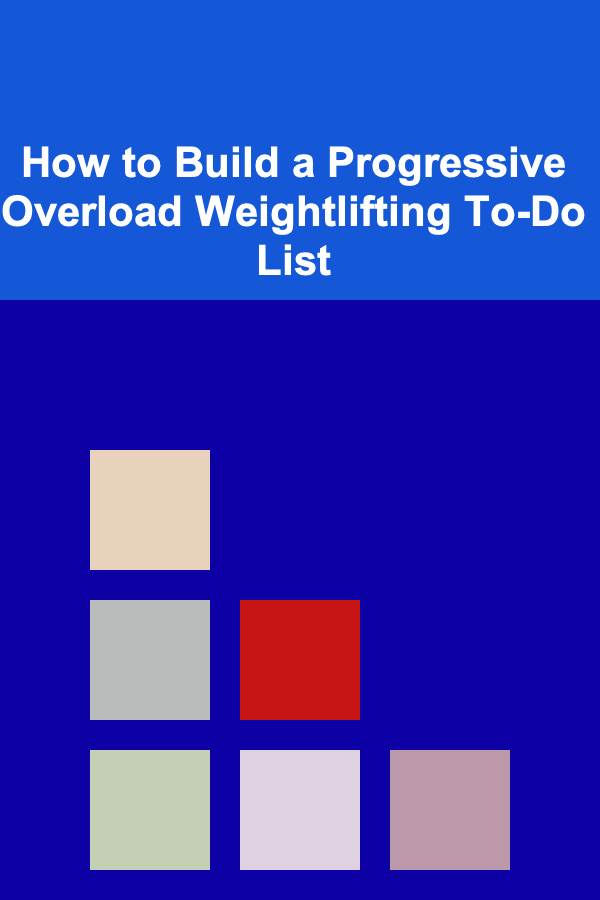
10 Tips for Printing on Fabric with Linoleum Blocks
ebook include PDF & Audio bundle (Micro Guide)
$12.99$11.99
Limited Time Offer! Order within the next:

Printing on fabric using linoleum blocks is a beautiful and creative way to add custom designs to textiles. Whether you're making your own clothes, home décor, or creating unique fabric prints for crafts and products, linoleum block printing offers a hands-on, artistic approach to textile design. However, getting a good print on fabric requires some practice, the right materials, and a thoughtful process.
In this article, we will explore ten essential tips for printing on fabric with linoleum blocks. These tips will help you achieve high-quality results and avoid common pitfalls, whether you're a beginner or an experienced printmaker.
Choose the Right Fabric for Printing
The type of fabric you choose will significantly impact the quality of your print. Different fabrics absorb ink in different ways, and some fabrics may be more prone to stretching or fading. When selecting fabric for linoleum block printing, consider the following:
Fabric Types to Consider:
- Cotton: Cotton is an ideal fabric for linoleum block printing due to its natural fibers, which absorb ink well and offer a smooth printing surface.
- Linen: Linen is another good option for block printing, offering a slightly textured surface that adds depth to prints.
- Canvas: Canvas or other heavy-weight fabrics can work well for printing, but keep in mind that they may require more ink due to their thicker texture.
- Silk: Silk can be a luxurious fabric for printing, but requires special ink for fabric to ensure it adheres well.
Avoid These Fabrics:
- Synthetic Fabrics (like polyester): These fabrics can be more difficult to print on and may not hold the ink as well.
- Stretch Fabrics: Fabrics that stretch or have a lot of elasticity, like spandex, may be more challenging to print on due to their tendency to distort the design.
Make sure to pre-wash your fabric before printing to remove any chemicals or sizing that may interfere with ink adhesion.
Prepare the Linoleum Block
Creating a linoleum block design is the core of the printing process. Proper preparation of your linoleum block is key to achieving clean and consistent prints.
Steps for Preparing a Linoleum Block:
- Cut the Design: Transfer your design onto the linoleum block using transfer paper or by drawing directly onto the block. Use carving tools to carve out the areas of the block you want to remain uninked.
- Use the Right Tools: Ensure you have sharp carving tools. Dull tools will cause uneven carving, resulting in poor prints.
- Test Your Block: Before printing on fabric, it's a good idea to test your linoleum block on paper to make sure the design is coming out as expected. This will allow you to make adjustments before printing on fabric.
The smoother the surface of the linoleum block, the more precise your prints will be, so ensure all areas are evenly carved.
Select the Right Ink for Fabric
Not all inks are suitable for fabric printing. To ensure your design adheres well to fabric and remains vibrant after washing, you need to use fabric-specific printing ink.
Types of Ink for Fabric Printing:
- Water-Based Fabric Ink: These inks are commonly used for block printing on fabric. They are easy to work with, non-toxic, and offer a soft hand feel on the fabric after curing.
- Solvent-Based Ink: This type of ink is more durable and weather-resistant, but it requires more ventilation and a longer drying time.
- Pigment-Based Ink: Pigment-based inks provide vibrant and long-lasting colors on fabric. These inks can be used for a variety of fabric types and are often preferred for commercial fabric printing.
Application Tip:
- Consistency: Ensure that your ink has the right consistency. Too thick, and it may not transfer evenly; too thin, and it may run or bleed into unwanted areas.
Test the ink on a small piece of fabric before committing to your entire project to make sure it adheres properly and the colors turn out as expected.
Use a Brayer to Apply Ink
One of the most important tools for linoleum block printing is a brayer, a roller used to apply ink evenly to the surface of the linoleum block. The way you use the brayer can significantly affect the quality of your prints.
Tips for Using a Brayer:
- Even Coverage: Roll the ink out on a flat surface (a piece of glass or a palette) until it is evenly spread. Roll the brayer back and forth until the ink is thin and smooth.
- Avoid Excess Ink: Apply only a thin layer of ink to the brayer at a time. Too much ink can cause the design to bleed or result in uneven prints.
- Test Your Pressure: When rolling ink onto the linoleum block, use even pressure. Too much pressure can cause ink to seep into the carved areas, while too little pressure can result in uneven coverage.
A brayer with soft rubber ensures that the ink is applied smoothly without causing distortions in your design.
Align and Secure Your Fabric for Printing
To achieve crisp and clear prints, it's essential to secure your fabric properly before printing. Any movement or shifting of the fabric during the printing process will result in blurred or misaligned prints.
Tips for Fabric Placement:
- Use a Printing Surface: A flat surface, such as a printing board or a thick piece of cardboard, can provide support for the fabric. Make sure the fabric is smooth and free from wrinkles before you begin.
- Secure the Fabric: Pin or tape the fabric in place to prevent shifting. Be sure that the fabric is taut but not stretched, as stretching can distort the design.
- Mark the Print Area: Use light pencil marks to outline where your design will go. This helps keep everything aligned for precise placement.
Apply the Linoleum Block to the Fabric
When it comes to printing, the technique used to transfer the design from the block to the fabric is just as important as the preparation of the materials.
Tips for Printing:
- Use Even Pressure: Apply even pressure across the block, pressing down on all areas to ensure the ink transfers clearly. You can use a wooden spoon, baren, or hand pressure for this.
- Avoid Excessive Force: Press gently and evenly to avoid distorting the design. Too much force can cause bleeding or blurred lines.
- Use a Press if Available: If you have access to a printing press, use it to apply consistent pressure. A press is especially helpful when printing larger designs or repeating patterns.
For the best results, experiment with your pressure and test on scrap fabric before moving to your final piece.
Set the Ink on Fabric
Once you have printed your design on the fabric, it's essential to ensure that the ink sets properly. Fabric ink often requires heat to cure and fully bond with the fibers.
Tips for Setting Ink:
- Heat Set the Print: After the print dries, use an iron to heat set the ink. Place a piece of parchment paper or a clean cloth over the print and press with a medium-high setting.
- Curing Time: If you're using screen printing ink or pigment-based ink, you may need to bake the fabric to cure the print. Follow the manufacturer's instructions for the best results.
- Let the Ink Dry Fully: Allow the print to dry completely before handling it, as moving the fabric too soon can cause smudging.
Setting the ink properly ensures that your prints remain vibrant and durable even after washing.
Handle the Fabric with Care After Printing
After your print is complete and the ink has set, handle your fabric with care to prevent any damage or distortion. Fabric printed with linoleum blocks can be delicate, and improper care can lead to fading, smudging, or damage.
Tips for Post-Printing Care:
- Avoid Stretching: Don't stretch or pull the fabric aggressively after printing, as this can distort the design.
- Hand Wash or Gentle Cycle: If you plan to wash the fabric, it's best to hand wash it or use a gentle cycle with cold water. Avoid harsh detergents that can damage the ink.
- Air Dry: To preserve the print, air dry the fabric rather than using a tumble dryer. Heat can cause fading or cracking of the design.
Experiment with Color Layering and Overlapping Designs
Linoleum block printing on fabric offers endless opportunities for creativity. One of the ways you can enhance your designs is by experimenting with color layering and overlapping patterns.
Tips for Creative Printing:
- Layering Colors: To add depth to your prints, consider using multiple colors. Allow one color to dry before applying the next layer to avoid mixing.
- Overlapping Prints: For more complex designs, you can overlap different prints. This requires careful alignment, so practice on scrap fabric before committing.
- Textural Effects: Use different carving techniques on the linoleum block to create texture or effects, such as crosshatching, stippling, or shading.
Experimenting with multiple layers and colors can give your fabric prints a unique, intricate feel.
Practice and Refine Your Technique
Like any art form, the more you practice, the better your results will be. Take time to experiment with different fabrics, colors, and techniques to discover what works best for you.
Tips for Improvement:
- Start Small: Begin with smaller prints and simple designs. As you become more comfortable with the process, move on to larger pieces or more intricate designs.
- Keep a Journal: Document your process, noting the fabrics, inks, and techniques used. This can help you refine your method and track what works best.
- Learn from Mistakes: Not every print will be perfect, and that's okay. Learn from any mistakes and use them to improve your future prints.
With time and practice, you'll develop your own style and approach to linoleum block printing on fabric, making each piece more unique and personal.
Linoleum block printing on fabric is a rewarding creative process that allows for endless artistic expression. By following these ten tips, you can ensure that your prints are vibrant, crisp, and long-lasting. Whether you're printing for personal projects, gifts, or professional products, the possibilities with linoleum block printing are limitless. Happy printing!
Reading More From Our Other Websites
- [Home Rental Property 101] How to Boost Your Rental Property's Value with Small Improvements
- [Organization Tip 101] How to Organize Transportation for Large Family Groups
- [Home Budget Decorating 101] How to Achieve a High-End Look with Budget Home Decor by Focusing on Texture
- [Organization Tip 101] Table Saw Safety: How to Avoid Kickback and Other Hazards
- [Home Storage Solution 101] How to Choose the Right Food Storage Containers: A Guide to Keeping Your Food Fresh and Your Kitchen Organized
- [Small Business 101] Best Methods for Automating Social Media Posting While Maintaining an Authentic Voice
- [Stamp Making Tip 101] Creative Stamp Designs to Elevate Your Leather Projects
- [Home Party Planning 101] How to Plan a Glow-in-the-Dark Party for Adults
- [Polymer Clay Modeling Tip 101] Baking Basics for Beginners: Choosing the Right Oven Settings and Tools for Polymer Clay
- [Home Cleaning 101] How to Clean a Toaster Oven: Restore Shine and Functionality

How to Incorporate Seasonal Decor Into Your Home Party Planning
Read More
How to Install Soundproof Curtains for Better Noise Control
Read More
How To Get Started with Co-operative Board Games
Read More
How To Find Your Next Binge-Worthy Drama Series
Read More
How to Build a Progressive Overload Weightlifting To-Do List
Read More
10 Tips for Understanding Climate Change Models
Read MoreOther Products

How to Incorporate Seasonal Decor Into Your Home Party Planning
Read More
How to Install Soundproof Curtains for Better Noise Control
Read More
How To Get Started with Co-operative Board Games
Read More
How To Find Your Next Binge-Worthy Drama Series
Read More
How to Build a Progressive Overload Weightlifting To-Do List
Read More